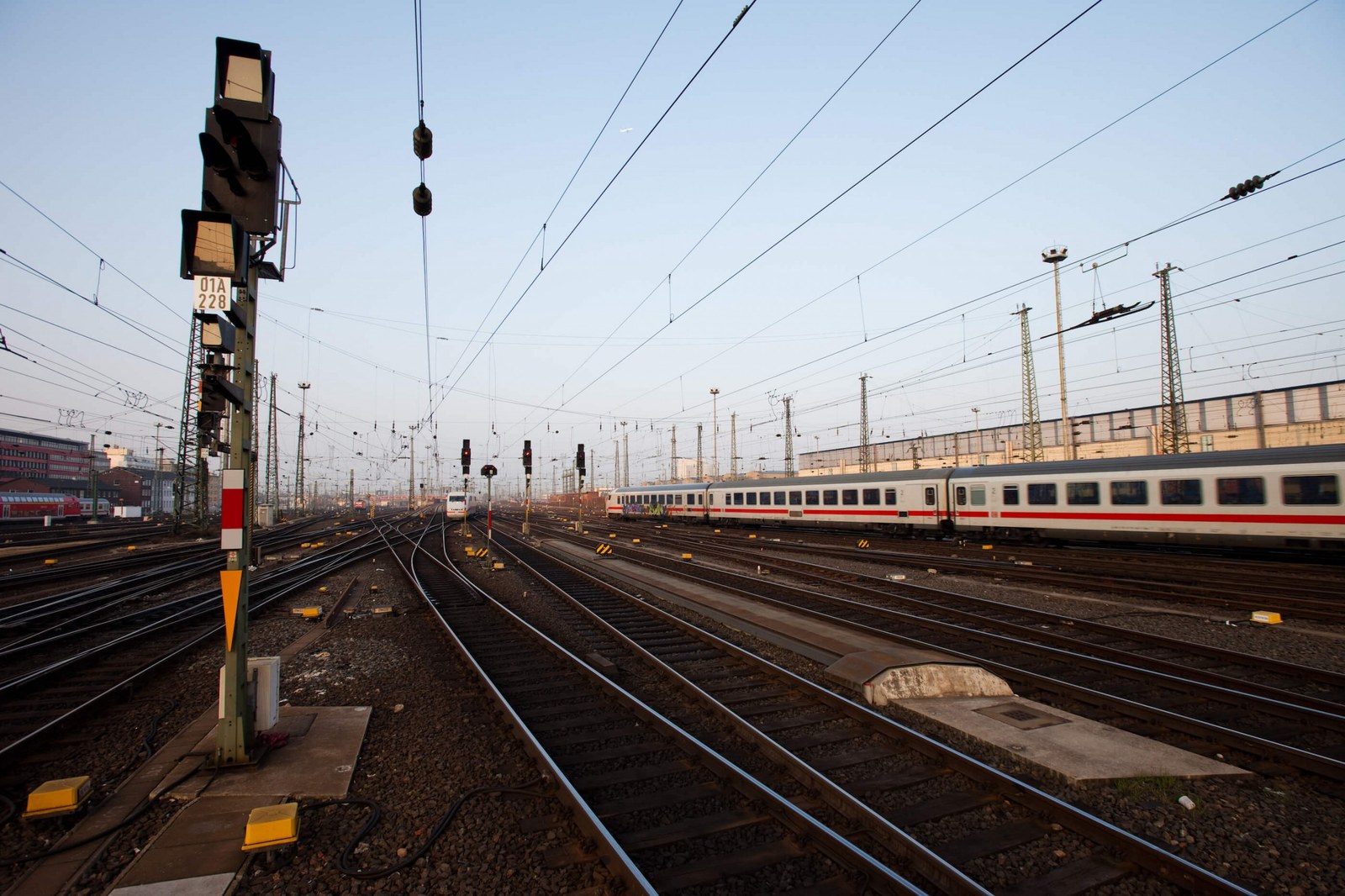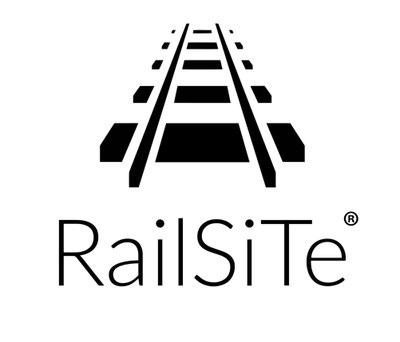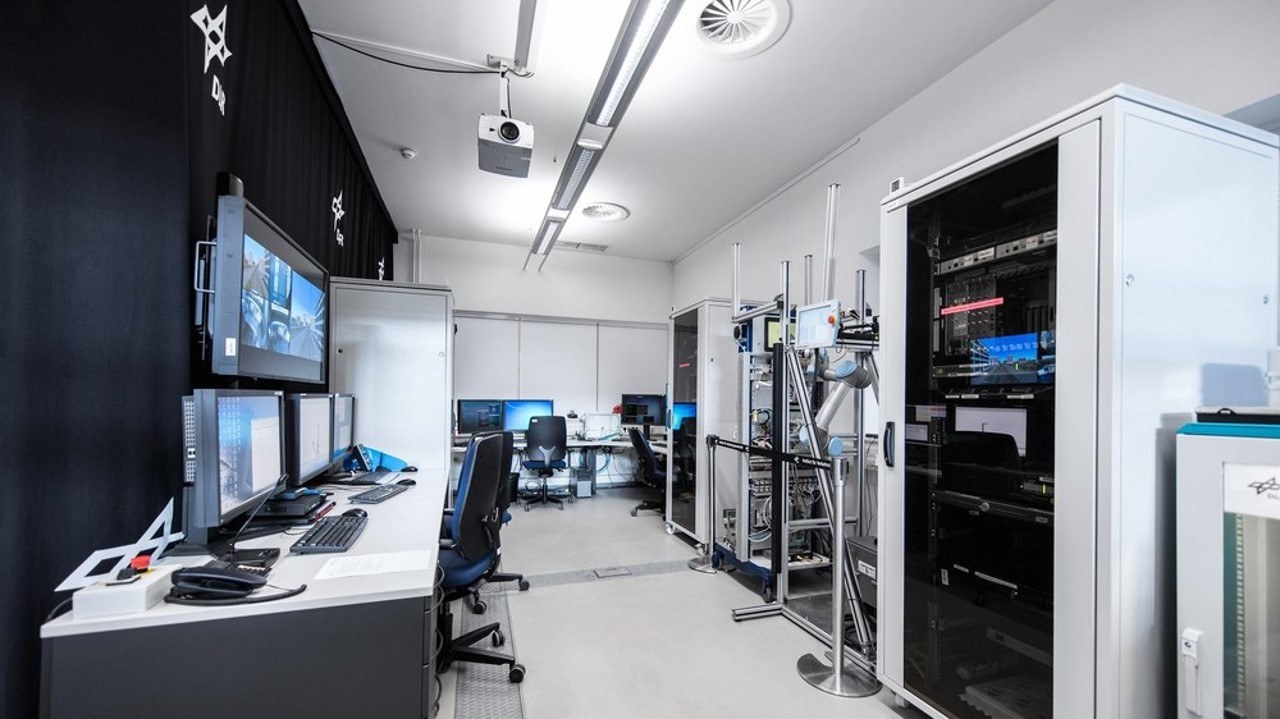RailSiTe®
Simulation and test laboratory for the railway sector – ETCS and EULYNX
Rail operators in Europe require independent laboratories to ensure that new technologies and processes comply not only with existing standards but also with the trains and infrastructure already in use. In reality, testing every single product or program would be too time-consuming and too expensive. Independent laboratories are therefore needed that can simulate the tests safely and quickly. In the RailSiTe® (railway simulation and testing) laboratory, DLR has been researching new concepts and procedures for the faster commissioning of complex communication systems for rail transport for more than 10 years.
For ETCS and EULYNX tests, the laboratory is additionally flexibly accredited in accordance with DIN-ISO 17025. This means that even if there is a change in the version of the specifications, tests relevant to approval can be carried out immediately - without the necessity of renewed auditing by the Deutsche Akkreditierungsstelle (German accreditation body).

canstockphoto.com
RailSiTe® – The railway laboratory – ETCS-EULYNX
RailSiTe® is DLR's simulation and test laboratory for railway technologies. It enables detailed technical and operational simulations as well as testing of railway management and signaling technology. The laboratory is capable of mapping the entire chain of the rail transport system in functional detail, including the trackside management and signaling technology, the interlocking, the track infrastructure and the air interface between track and train to the side of the vehicle.
How railway operators benefit from RailSiTe®
RailSiTe® is one of only six independent laboratories in Europe used for testing the conformity and interoperability of subsystems and components of the ETCS. Railway operators benefit from its modular architecture, which makes it possible to integrate individual components of the management and signaling technology into the simulation both as software modules and as hardware components via real physical interfaces. The laboratory’s high level of precision is unparalleled: the entire communication apparatus of the target system is simulated down to the smallest detail to best represent the real world.
Possible simulations and tests with RailSiTe®
- ETCS conformance tests
Particularly for ETCS onboard units, the laboratory offers a fast and cost-effective option for interoperability tests and proof of conformity for certification by ETCS specifications - for the finished product or even during development. For this purpose, the generally applicable specifications/subsets are used as a basis. - Validation of management and signaling technology
The modular architecture makes it possible to integrate individual components of the management and signaling technology into the simulation both as software modules and as hardware components via real physical interfaces. RailSiTe® can therefore be used to test trackside components such as radio block centers, signal boxes and field components as well as the project planning of the line concerning their operational-technical functions - on their own or in interaction. - EULYNX conformance tests
The laboratory offers initial conformity tests of the standardized SCI (Standard Communication Interface) interfaces for EULYNX object controller. - Line validation and fault analysis
For railway lines in operation, a laboratory simulation in RailSiTe® can be used for fault analyses. Using conventional JRU data (juridical recording unit) from an actual train running under ETCS monitoring, the faults occurring in operation can be reproduced and analyzed in the laboratory.
General and technical data
With RailSiTe®, the Institute of Transportation Systems offers an economic possibility for interoperability tests as well as proof of conformity for certification with regard to ETCS and EULYNX specification. The laboratory can be used during development or for finished products.
Through the research area of test automation, the individual test phases from test preparation through to report generation are continuously improved regarding their quality. At the same time, processes and methods are developed that reduce the outlay required for conducting conformity tests. As soon as the results of the research have been proven to be correct, they flow directly into the implementation of the conformity tests.
Operating principle of the test laboratory

Das Testlabor RailSiTe
Your consent to the storage of data ('cookies') is required for the playback of this video on Youtube.com. You can view and change your current data storage settings at any time under privacy.
Due to its modular and generic architecture, RailSiTe® is not bound to a specific safety technology but can be easily adapted to new technologies with minimal effort. The architecture is specialized for communications or digitalized railway management and signaling (Leit- und Sicherungstechnik; LST) technology. It can be used to carry out functional tests, such as the testing of content from specific communications for conformity and interoperability. RailSiTe® can be used to test ETCS onboard units and also be used to test object controllers for infrastructure elements according to EULYNX specifications. To do this, the device is first connected to the RailSiTe® via various interfaces. Then, the individual test sequences are virtualized and automatically processed in the laboratory, depending on the specification (Subset-076 or Eu.Doc.108). In the case of ETCS tests, a robotic system carries out the inputs that would be made by the train driver. The advantage of this is that it allows the tests to be run throughout the day. Afterward, the results are compared with the requirements listed in the specifications. Automated assessments were designed, implemented, and validated within the test campaigns to define the evaluation method. Digital twins are used which apply new tools in parallel with validated tools to optimize and automate the test procedure. The tests will continue to be conducted with the existing methods until the final validation of the tools, at which point the results of both approaches will be compared. Only after successful validation of the new toolchain will it be used for further test campaigns. Finally, a test report is prepared that summarizes the result and serves as a basis for approval by the relevant authority. Currently, the laboratory is frequently used for conformity tests of ETCS onboard units, such as the main control units on a locomotive. These campaigns help validate fundamental research results related to simulation-based testing. One of these results is the reduction of the execution time for the tests of the on-board units, which has been reduced by approximately 50 percent over the last 10 years. Furthermore, the quality of the tests has been significantly increased, which is measurable in test and requirement coverage.
Since mid of 2023 tests in accordance with EULYNX specifications can be carried out in RailSiTe®. Most of these specifications have already been published. The missing specifications are currently under discussion in a European working group and will also be published by this group. In this context, the laboratory has been expanded by an additional set-up that will enable the testing of infrastructure elements regarding conformity and interoperability.
Reference projects
To date and in the future, the employees of the laboratory have been and will continue to be successfully involved in various research projects. Amongst other achievements, DLR has been involved in updating the test specifications Subset-076 and Subset-094 to Baseline 3. Currently, DLR is working on various detailed issues with the EULYNX consortium, which is driving forward the creation of the EULYNX specifications. The participation in the Shift2Rail projects, in which, amongst other things, the topics of approval and testing in the laboratory were and are being worked on at European level against the background of standardization in the railway sector, is further proof of the commitment of the employees. In addition, for many years DLR has been carrying out tests for diverse industrial companies from the railway sector on their newly developed onboard units, to obtain approval through submission of the test report to the notified body. Further projects on the automation and digitalization of test processes as well as methods for the testing of a track-planning project in the laboratory are currently under development.
Our collaborations
DLR collaborations include close working relationships with the other five European ETCS reference laboratories: CEDEX in Madrid (Spain), RINA in Genoa (Italy), SNCF in Le Mans (France), Italcertifer in Rome (Italy) and Multitel in Mons (Belgium). With RailSiTe®, DLR is the presiding member of the European Accredited Labs (EAL), an association of ETCS test laboratories that is recognized by the EU.
FAQ – Frequently asked questions
What kind of performance can I expect from RailSiTe®?
- One result of our service is a test report from the target/actual comparison, in which the requirements from the specification are compared with the results from the virtual test runs of the onboard unit in the laboratory. This report can be used as the basis for approval by the notified body.
- RailSiTe® can simulate real routes, and can reproduce and analyze faults that have occurred in the field.
- In the future, RailSiTe® - in an additional laboratory unit - will be able to test control devices of the infrastructure elements (e.g. switches and light signal systems) regarding their conformity to the EULYNX specifications.
- RailSiTe® offers a multitude of further application possibilities. For individual assistance, please contact our team at raillab@dlr.de.
What exactly is tested?
In our laboratory, onboard units that are installed in trains are tested. To be precise, the functionality of the software is tested - i.e. whether it does exactly what it is expected to do by the specifications.
In what condition do manufacturers send the onboard unit to the laboratory?
The decision on this lies with the supplier. In the laboratory, we can test both fully developed devices as well as devices during development. Please do not hesitate to contact our experts at raillab@dlr.de at an early stage so that we can provide you with optimum support throughout the process.
Can the conformity tests only be carried out on-site in the RailSiTe® laboratory at DLR?
Currently, tests can only be carried out on DLR premises. Our team is working flat out to ensure that our test infrastructure can also be brought to our customers in the future. Please do not hesitate to contact us if you are interested in using our mobile test facilities.
When can I expect an offer for a EULYNX test?
First tests with our newly built laboratory have already been successfully carried out. Since October 2023, our laboratory has been flexibly accredited by the DAkkS in accordance with DIN-ISO 17025. We would be delighted to provide you with an offer for a RailSiTe® test. Please contact us at raillab@dlr.de.
What exactly can customers have tested in accordance with the EULYNX specifications?
Test specimens include, for example, the control units of barriers, light signal systems and many other items.
Which interfaces can you test?
With our RailSiTe® we can test standardized SCI interfaces using RaSTA protocol.
Who can I contact if I am interested in a RailSiTe® service?
There is an E-mail address available that you are welcome to use for inquiries: raillab@dlr.de


